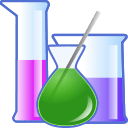Object Oriented Enterprise Modelling
 |
Subject classification: this is an information technology resource . |
 |
Educational level: this is a research resource. |
 |
Resource type: this resource is a workshop. |
 |
Resource type: this resource is a discussion. Please feel welcome to join it. |
 |
Completion status: this resource is ~25% complete. |
 |
Attribution: User Andreas Leue 14:47, 14 November 2008 (UTC) created this resource and is actively using it. Please coordinate future development with him/her if possible. |
Welcome to OOEM
This research project is about defining and discussing a modelling notation
capable of comprehensively describing enterprises within a single, integrated model.
This project page is under construction.
The following is an incomplete set of material I have collected to start with. It
mainly originates from my research activities within my company during development
of an execution engine for such an enterprise model. I'm interested in moving
these activities into a public community here.
Scope
An enterprise model comprises at least
- business structure: organization and relations
- business things: i.e. objects
- business dynamics: processes
- business location: spaces (of all kinds)
Stakeholders
- Management: an OOEM model shall be, as far as necessary, usable by business managers to organize a complex and large enterprise
- Employers: an OOEM model shall be, as far as necessary, easily usable by employees to ease and coordinate their everyday work in a friendly manner
- IT: an OOEM shall be executable - i.e. appropriate software systems can be created automatically from it (including core systems, user interfaces and business processes)
- Enterprise Architect: it is not expected that any of the above stakeholders has or is able to understand the complete model, this is the task of the Enterprise Architect
Components of OOEM